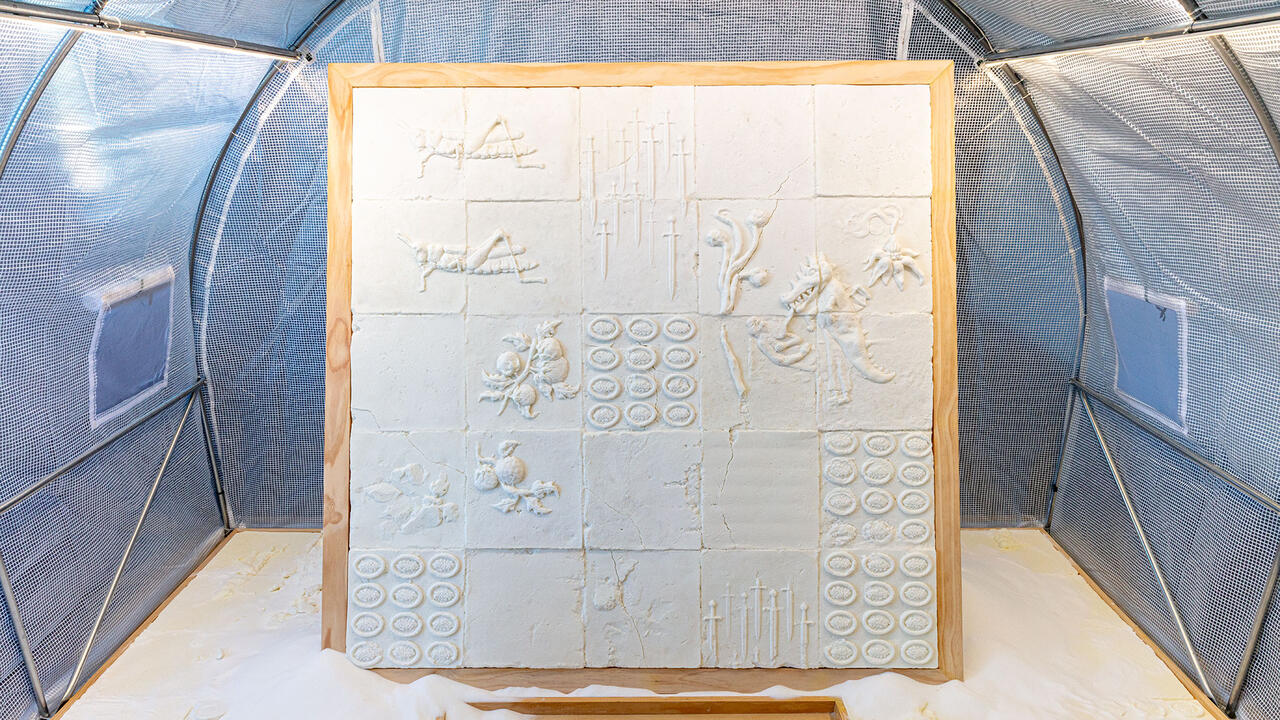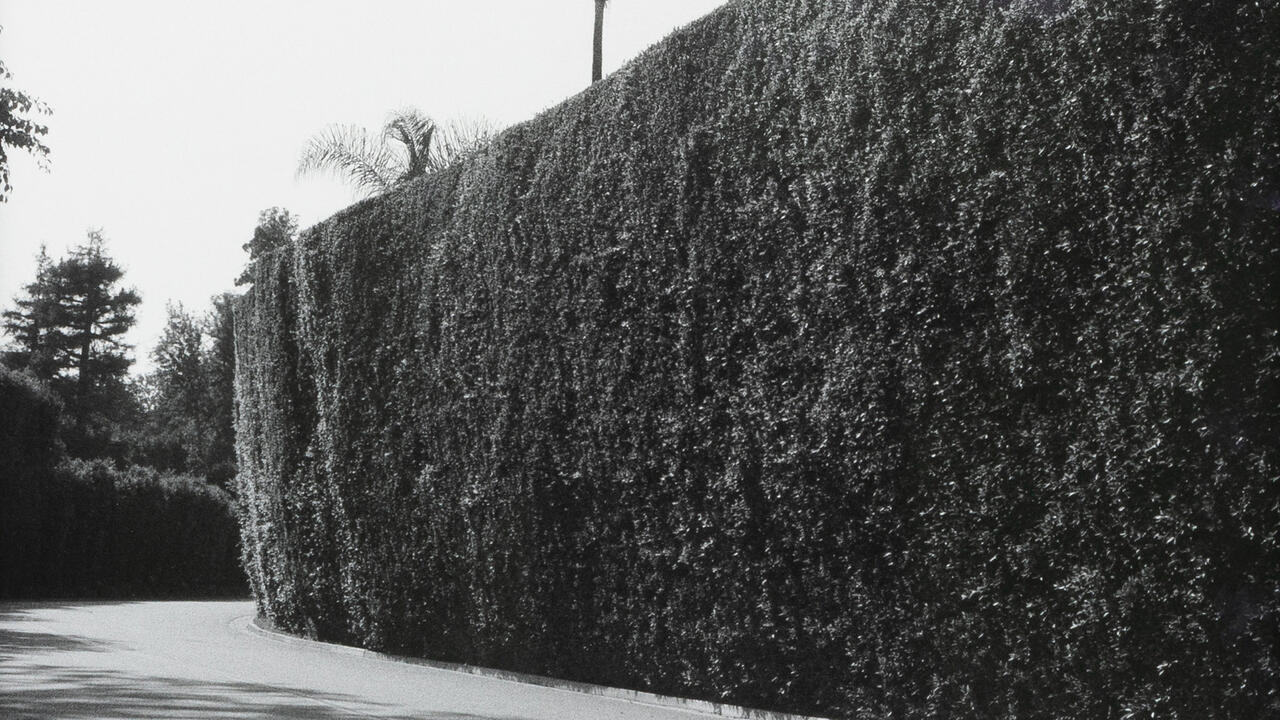Silke Schatz
Between 1987 and 1990, the German artist Silke Schatz, then in her early 20s, lived with other squatters in a disused 19th century concert hall in Braunschweig. In the imagination of the American mainstream media, at least, squatters are a step above the homeless. Schatz' first one-person exhibition, 'Open-Eyed Daydream', on the contrary, reflects on her experience from a viewpoint informed by a European, anarchist or leftist activist tradition, in which squatting represents a practical recycling of existing architecture and, more broadly, a residual (if fleeting) opportunity for self-determination at the interstices of Capitalist relations of property. As the exhibition's title implies, Schatz' work prompts consideration of the viability of, and the conflicts within, Utopian strains of thought and activism.
Raft (all works 1999) recreates a dining area in the squat. On a low platform sits half a ping-pong table on saw horses, four mismatched chairs and a large free-standing wall, covered in a collage of snapshots, clippings, posters, fliers, manifesto-like announcements and press reports of police activity against the squatters. The top left hand image is a photograph of an Eames ESU storage unit (a desirable commodity, even for squatters) and elsewhere snaps of standard, Modernist high-rise blocks seem to frame a relation - difficult to characterise - between the squatters' activities and some of the failed, utilitarian/Utopian dreams of Modernism.
The installation component is accompanied by two architectural or faux-architectural drawings of the concert hall, in colour and lead pencil on paper. The larger and more striking, Open-Eyed Daydream, Konzerthaus Erdgescho?ä, is an airy, wall-sized, elegant and engrossing schematic rendering. The building seems to be repeated a number of times, overlaying itself in different colours, as though the drawing is depicting a series of virtual buildings, all of which occupy the same space. This is accompanied by a smaller index or key: each colour in the large drawing represents a different, real or imaginary set of functions for areas within the building. Schatz' imaginary recasting of the building suggests that the functions of architecture are mutable, unpredictable, and not exhausted by 'normal' property relations. A disused concert hall, after all, could become homes and a community centre, even if it also became a focus of state reprisal against this disturbance of those relations.
Perhaps the most telling aspect of the exhibition is the contrast between the elegance of the drawings, and the makeshift quality of the life referred to by Raft (as the title implies, something clung to, tenuously): a nice Modernist design object somewhere in the building, dinner off a ping-pong table, a police battering-ram at the door. The drawings provide a retrospective imagining of the Utopian potential of the building, presumably derived from Schatz' actual experience there, which might in turn be seen in relation to an earlier Utopian impulse. The installation provides a glimpse of that exuberant, messy and short-lived life. On one hand, the drawings might be seen as a theoretical distillation of the squatters' practice, in which case the exhibition would take on a melancholy air. On the other hand, the layered spaces of Schatz' drawings, made about a decade-old experience, may say something about the ways in which Utopian thought can be renewed.
















